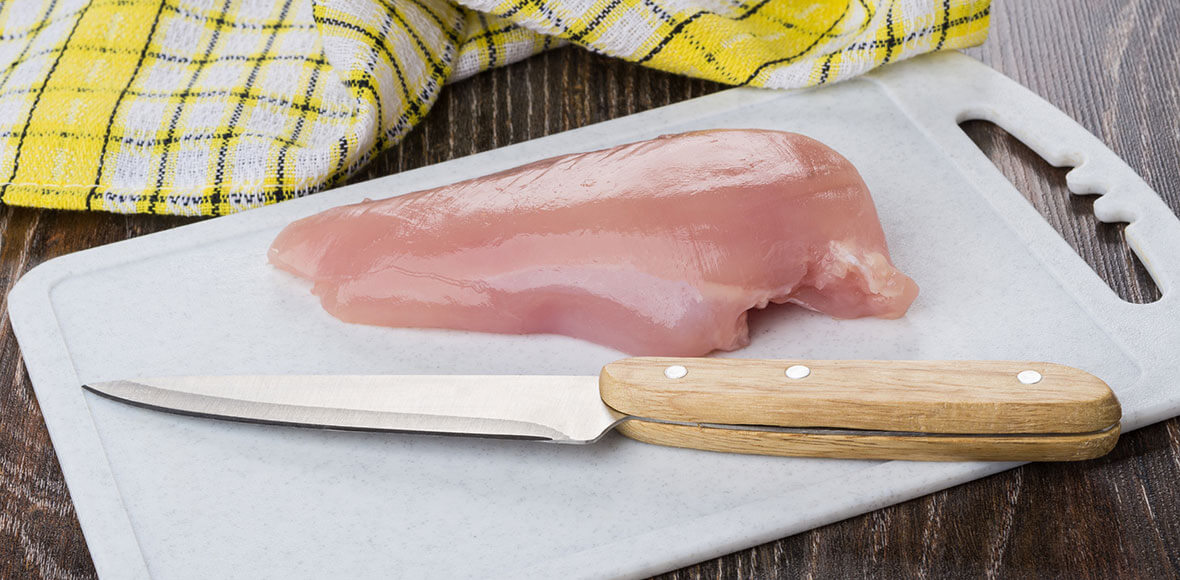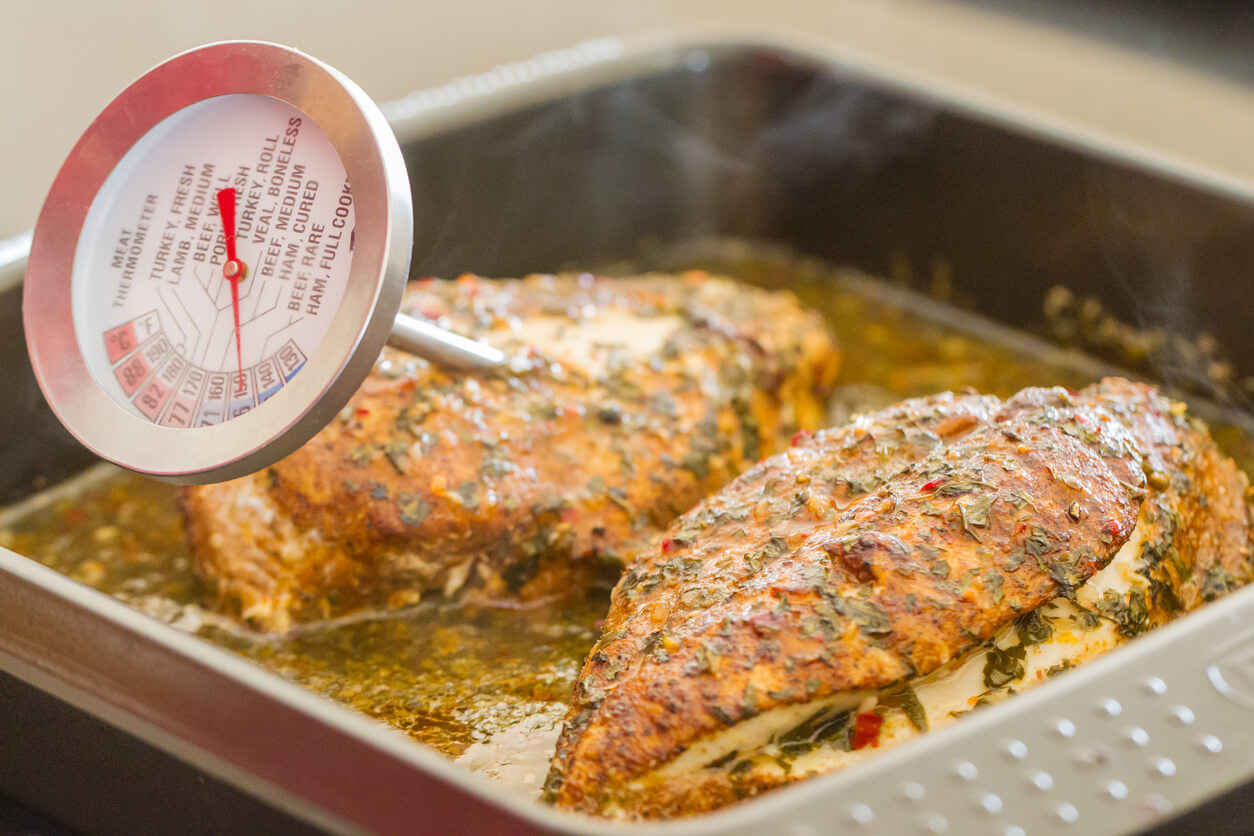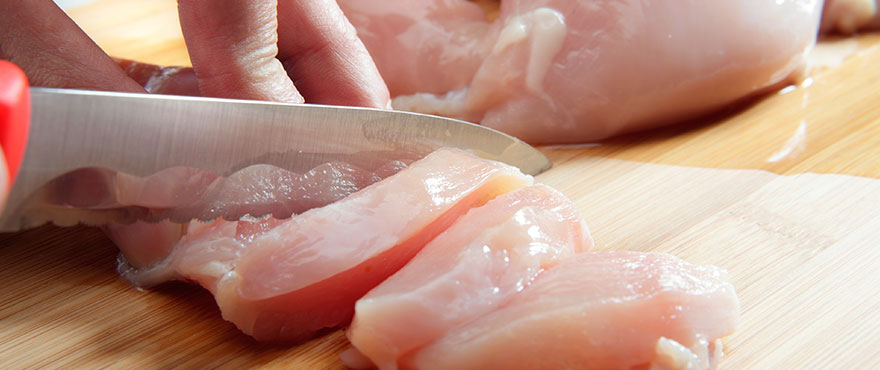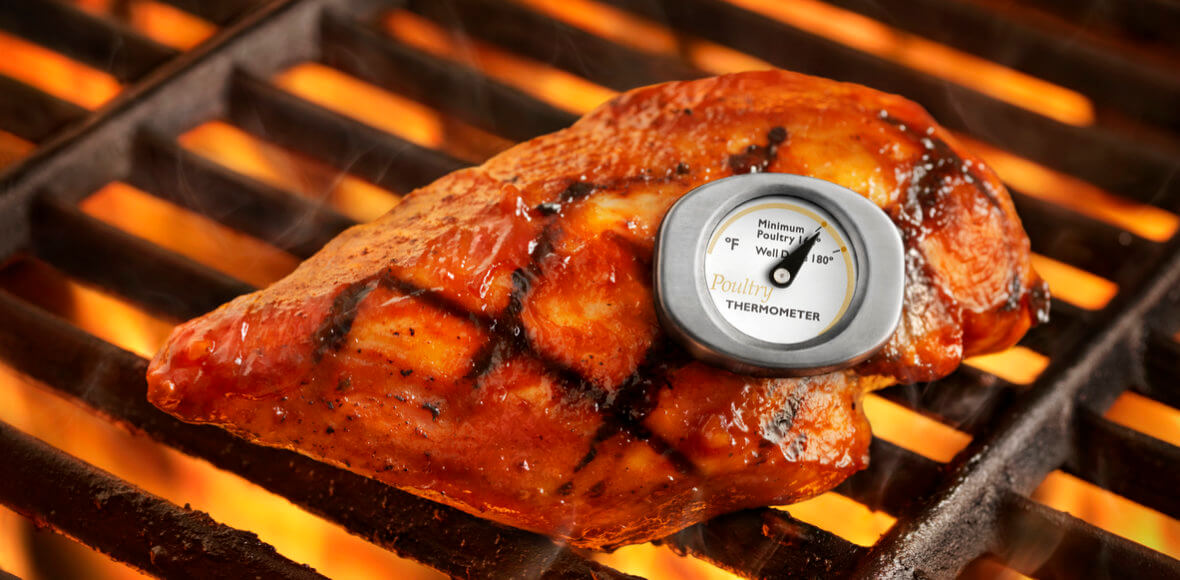
Food Safety Tips
When handling and preparing chicken, it is important to be aware of a few simple food safety guidelines. We’ve prepared a list of frequently asked questions and tips to keep you and your family safe and healthy in the kitchen.
What should I look for when buying chicken at the grocery store?
- When buying any meat products, check the packaging for any tears or holes. Meat should be cold and properly wrapped. Vacuum sealed packages are ideal because they keep the meat completely contained.
- Always check the “Packaged On” and “Best Before” dates.
How can I ensure the chicken I bring home stays fresh?
- Take advantage of the plastic bags supplied at the meat counter and package your chicken before you put it in your cart. The extra layer of plastic will protect from spillage and contamination.
- Chicken or other meat purchases should be the last thing you pick up before you head to the cash.
- Bring a cooler bag and some ice packs with you to the grocery store. Place your groceries in the bag on your way home to keep them refrigerated, especially if you need to run other errands. Try to schedule grocery shopping last on your to-do list to make sure your food stays cool.
How long will chicken keep?
| Cut | Refrigerator (4°C or 40°F) | Freezer (-18º or 0°F) |
| Whole chicken | 2-3 days | 12 months |
| Chicken pieces | 2-3 days | 6 months |
| Cooked chicken | 3-4 days | 3 months |
| Ground chicken | 1-2 days | 3 months |
What is the safest way to thaw frozen chicken?
You should always thaw your chicken wrapped and in the fridge. Do NOT thaw frozen chicken on the counter. Place the frozen chicken in a bowl or on a plate on the bottom shelf of the fridge. Make sure you use the chicken within 48 hours of thawing.
You can also thaw your chicken in cold water. This method is popular among chefs because it can be done in under two hours, but it requires a lot of attention. The water needs to be changed regularly – about every 30 minutes – to ensure the temperature doesn’t exceed 21°C (70°F). Make sure the chicken is thoroughly sealed.
Thawing times
| Wrapped, in refrigerator | 10 hours per kilogram (5 hours per pound) |
| Wrapped, in several changes of cold water | 2 hours per kilogram (1 hour per pound) |
| Microwave, defrost setting | 10-15 minutes per kilogram (5 minutes per pound) |
Note: When defrosting in the microwave, chicken should be loosely covered and pieces separated and rotated several times to ensure even penetration.
How can I avoid cross contamination?
Package and separate: When you’re storing raw foods in the fridge, place them in sealed containers or plastic bags on the bottom shelf or in a designated drawer.
Marinades: When marinating, discard any leftover liquid. Never use marinade on cooked foods without first boiling it. Make sure to wash and sanitize your brush or use separate brushes when marinating raw and cooked foods.
Cooking separately: If you are preparing a dish that calls for several different meat ingredients, prepare each meat separately. Sanitize your cutting board between ingredients and never place cooked food on the same surface as raw food.
Cutting board safety: When using a cutting board, ask yourself these questions: How old is it? When was the last time you disinfected it? Do you use a separate cutting board for meat and fruits and veggies? It’s not enough to wash your cutting board with hot soapy water – they need to be periodically disinfected. Cutting boards, especially wooden ones, are porous and create ideal environments for bacteria to grow.


